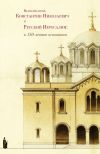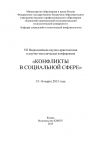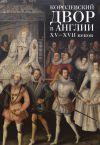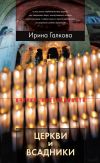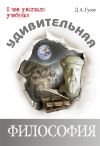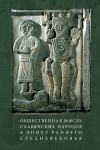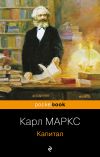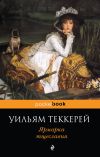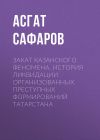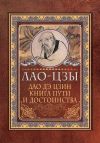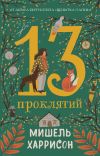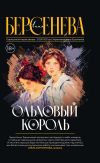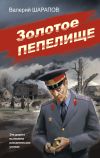Текст книги "Рассказы о путешествиях, паломничествах, миграциях в источниках Средних веков и раннего Нового времени. Материалы конференции"
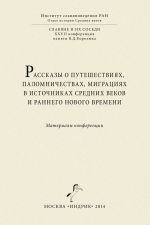
Автор книги: Сборник статей
Жанр: Религиоведение, Религия
сообщить о неприемлемом содержимом
Текущая страница: 1 (всего у книги 9 страниц) [доступный отрывок для чтения: 2 страниц]
Рассказы о путешествиях, паломничествах, миграциях в источниках Средних веков и раннего Нового времени. Материалы конференции
Посольства из Рима в Россию конца XVI в.: проблемы понимания
О.А. Акимова
(Институт славяноведения РАН)
Рассматриваются проблемы языкового и культурного понимания / непонимания как важного аспекта взаимоотношения сторон при исполнении посольских миссий, направленных из Рима в Россию в конце XVI в., и их влияние на результаты таких миссий. С этой точки зрения разбираются сведения об участии в посольстве Антонио Поссевино к двору Ивана Грозного в 1581-82 гг. иезуита из Загреба Степана Дреноци (Drenoczy, Drenocky)1. Основное внимание уделено известиям о посольствах в Россию при Федоре Иоанновиче в 1595 и 1597 гг., которые возглавлял далматинский священник Александр Комулович (Comulo, Comuli, Comuleo), подвизайшийся в обществе св. Иеронима в Риме2. Общество возникло в конце XVI в. под эгидой Конгрегации пропаганды веры для священников из хорватских и далматинских земель; целью его была унификация славянских церковных книг, письменности и языка для приведения славян восточного обряда к единству по вере. Инструкции, данные Комуловичу папой Климентом VIII, раскрывают причины поставления его во главе посольства: знание им языка прежде всего в сочетании с глубоким пониманием вопросов веры рассматривается папой в качестве основы успешных переговоров о соединении церквей. За несколько лет до этого Комулович совершал посольские поездки по турецким владениям Албании, Сербии, Болгарии, и др. территорий в связи с исследованием вопроса об антитурецких выступлениях, получив соответствующие инструкции от папы Сикста V. В донесениях и отчете по итогам этой работы Комулович рассуждал о возможностях распространения на этих земях католичества, сообщал данные о мужском населении, способном вести войну с турками, рассуждал о языковой ситуации, представлял свой план вовлечения Москвы в войну и поддержки местным населением действий русского царя, итогом которых должно было стать взятие Константинополя. Представления об антитурецкой коалиции, места в ней России и ее европейских союзников, устройства посттурецкого мира получили развитие в донесениях Комуловича 1594–1595 гг., составленных по итогам поездок по Трансильвании, Молдавии, Валахии, Польше. Сопоставление этих замыслов с соответствующими планами, представленными в текстах Поссевино и папы Климента VIII, демонстрируют подчеркнутое внимание Комуловича к союзу с Россией, в целом отвечавшее представлениям хорватского клира из общества св. Иерониама в Риме. В выходивших из их среды языковых проектов постулировалось не только родство, но и тождество языков балканских славян и русских. Переводческая деятельность Комуловича показывает его интерес к унификации языка славянской книжности.
Между тем посольская миссия 1595 г. не имела успеха, а посольство 1597 г. оказалось проваленным, поскольку, по донесениям папских нунциев из Варшавы, в Москве были убеждены в инициативном участии Комуловича в заключении Брестской унии. Почти одновременно с миссией Комуловича были организованы австрийские посольства в Москву, руководимые дипломатом, очевидно, чешского происхождения Николаем Варкочем3. Оставленные им описания вместе с документами, относящимися к посольствам Комуловича, демонстрируют особенности как организации самих посольств, так и оказываемого им приема в соответствии с политическими предпочтениями московского двора.
Нашедшее отражение в сочинении Поссевино и папских документах 90-х гг. XVI в. отношение к русским как к крайне невежественным, агрессивным, ненавидящим латинян и убежденным схизматикам укоренилось в Риме. Примером поиска путей урегулирования отношений и взаимопонимания явилась записка об организации миссии в Москву, составленная в 1641 г. Юраем Крижаничем4 и направленная им в Конгрегацию веры, которая была написана под влиянием суждений Поссевино и других авторов и одновременно в полемике с ними, и развивала некоторые положения, высказанные в свое время Александром Комуловичем5.
Примечания
1 Биографические сведения о Дреноце см.: Korade М. Stjepan Drenocy u misi-ji sjedinjenja krscana (1581–1582) // Homo imago et amicus Dei, Miscellanea in honorem Joannis Golub. Romae, 1991. S. 452.-457.
2 Письма и донесения Александра Комуловича, а также документы о его деятельности собраны в работах: Pierling Р., Racki F. Komulovica izvjestaj і listovi о poslanstvu njegovu u Tursku, Erdelj, Moldavsku і Poljsku // Starine JAZU. Knj. 14. Zagreb, 1882. S. 83.-124.; Pierling P. Novi izvori о Komulovicu // Starine JAZU. Knj. 16. Zagreb, 1884. S. 210.-251.; Fermendzin E. Prilozi к poznavanju diplomatskog poslanstva Aleksandra Komulovica medu Slavene od g. 1593. do 1597 // Starine JAZU. Knj. 36. Zagreb, 1918. S. 7-30.
3 Оригинал и перевод записок Варкоча о поездке 1593 г. опубликован А.Шемякиным: Описание путешествия в Москву Николая Варкоча, посла римского императора с 22 июля 1593 года // Чтения императорского Общества истории и древностей Российских. Москва, 1874. № 4. О поездке 1589 см. публикацию Л.П.Лаптевой: Донесение австрийского посла о поездке в Москву в 1589 году // Вопросы истории. Москва, 1978. № 6.
4 Оригинал на итал. языке и русский перевод: Записка Юрия Крижанича о миссии в Москву 1641 г. / Предисл. и примеч. П.Пирлинга. Москва, 1901.
5 Об этой связи: Trstenjak Т. Aleksandar Komulovic kao moguci uzor Ju-rju Krizanicu u politici і crkvenom jedinstvu // Zbornik Zavoda za povijesne znanosti. V. 14. Zagreb, 1986. S.285–302.
Reports of Medieval Travellers in the Kingdom of Hungary
János M. Bak
(Central European University, Budapest)
Stretching somewhat the subject, one could start with the visit of Priskos rhetor (of Panium) to the court of Attila the Hun, in 448/9, who described the court and the powerful ruler, “the Scourge of God,” in some detail. The location may have been what came to be Buda or Esztergom. It is his report that presents Attila as a generous host but a modest person himself:
When all were arranged in order a cupbearer approached and offered Attila an ivy-wood cup of wine. He took it and saluted the first in rank, and the one honored by the greeting stood up. It was not right for him to sit down until the king had either tasted the wine or drunk it up and had given the cup back to the cupbearer. All those present honored him in the same way as he remained seated, taking the cups and, after a salutation, tasting them. Each guest had his own cupbearer who had to come forward in order when Attilas cupbearer retired. After the second man had been honored and the others in order, Attila greeted us also with the same ritual according to the order of the seats. When everyone had been honored by this salutation the cupbearers went out, and tables for three or four or more men were set up next to that of Attila. From these each was able to partake of the things placed on his plate without leaving the original arrangement of chairs. Attila s servant was the first to enter, bearing a platter full of meat, and then the servants who waited on the rest placed bread and viands on the tables. While sumptuous food had been prepared – served on silver plates– for the other barbarians and for us; for Attila there was nothing but meat on a wooden trencher. He showed himself temperate in all other ways too, for gold and silver goblets were offered to the men at the feast, but his mug was of wood. His dress too was plain, having care for nothing other than to be clean, nor was the sword by his side, nor the clasps of his barbarian boots, nor the bridle of his horse, like those of other Scythians, adorned with gold or gems or anything of high price.1
The information of Priskos on the region was used then by several later authors, including Constanine Porphyrogenitus. There must have been other Byzantine travelers in the region, but no detailed account is known.
In the central Middle Ages, the travelers across Hungary and its neighbors on the Balkans came to the region mostly on their way to the Holy Land, as pilgrims or crusaders. After the foundation of the kingdom, King (St.) Stephen I, opened the pilgrimage route in 1018, with a major station at Alba Regia, one of the royal residences. Bishop (St.) Gerard, a Venetian, came to the country on his way to Jerusalem, but was, as is well known, detained by the king and made bishop of a newly conquered area in the southeast of the kingdom. It is not quite clear from the Vita of the saint, how he ended up in Pecs/Quinqueecclesiis, having been originally sailing down the Adriatic Sea, but landing in Zadar, whence (apparently on the counsel of an abbot) he travelled to the Danube, planning to sail down the river. While he did not write a travelogue, the legend records his travels in Hungary and his having witnessed a servant girl singing “the symphony of the Magyars,” an oft-quoted evidence for the people’s musical history.2
In 1054, St Lietbert of Cambrai and (according to tradition) three thousand pilgrims crossed Hungary and the Balkans. His monk Rudolf recorded that they were suspected by the king of “the Huns” and ordered to appear before him. But he, seeing the holy bishop and his energy travelling so far, not only allowed them to cross, but also gave them guides “as they did no know the road earlier ”(Thus, the pilgrimage route seems to have been not yet widely popular.) The pilgrims were called the “Host of God.” Later, they encountered some wild Barbarians in Bulgaria, riding half naked on wild horses “with ribbons on their head.” The bishop was prepared to suffer martyrdom at their hands, but they were moved by the saint’s appearance and so they reached Greek land without trouble.3
Hundred years later, Otto of Freising described Hungary, which he crossed with the German Crusaders of Emperor Conrad in 1147.4 He is the first Western traveler, who observed the country and its government in some detail. Otto records that the Hungarians have few stone or even wooden buildings and live during the summer in tents. The king’s power is supreme and he compares it with the conditions in the Empire, where the great men of the realm have considerable might. In Hungary, so he observed, the lords come to the king, have to bring their own chairs with them (!?) into the council – which they hold for every important decision – but have to obey the ruler unconditionally. The king is also the supreme judge and (so Otto) it is not that the peers have a say in court. Very important is his observation about the armed forces: there are many foreigners trained in knightly warfare, but the Magyars have crude weapons and are learning refined fighting from the guests. (This fits well with what we know about the advena clans listed in the chronicles.)5 Otto knew about the system of counties – his number 70 of them is a unique information about the age – and the office of the comites.
Several other Crusaders’ chronicles mention briefly their trip across the Carpathian Basin, but none of them goes into such details as Otto. Odo of Deuil (1117) and others, usually note only the difficulties of the terrain and the rivers. Odo – who crossed Hungary in 15 days – writes that except the Danube, the country and its rivers are marshy and flood lands. Only the banks of the Drava are steep and thus less flooded, but difficult to cross. Moreover, “the Danube carries the treasures of many lands to Esztergom.” He also added that “the country produces so much good food that it is said the Julius Caesar’s commissioners were in it.”6 The priest Ansbert (1189) also recorded that King Bela Ill’s residence was in Esztergom, that the king and his royal guests (Fredrick Barbarossa and his lords) went for a hunt on the Great Island (Csepel Island) and that they visited Old Buda. He also complained that they were cheated in the exchange of their Cologne marks – giving valuable information on twelfth-century coinage in Hungary. Ansbert added that they had a peaceful crossing of Hungary and were not, as elsewhere, attacked by dangerous insects or snakes.' These brief references and a few similar ones are all helpful in the reconstruction of royal itineraries and economic or social conditions of the age.8
The number of foreigners – mainly Germans – visiting the kingdom increased in the fourteenth and fifteenth centuries, especially under the reign of King and Emperor Sigismund, but wrote little about the country. Yet the most interesting and detailed travelogue was written in 1433 by the Burgundian diplomat and spy, Bertrandon de la Brocquiere, who crossed Hungary on his way back from the Holy Band. The report, presented to Philippe the Good, was aimed at encouraging a new crusade, after the defeat of the European army at Nicopolis. In the part about the Balkans, the author discussed the manners and especially the military arrangements of the Turks (Ottomans) and then his trip from Belgrade through Szeged, Pest and Buda to Austria. His description of the cities he passed through and their economy is a unique source for the early fifteenth-century conditions.9
The first city he visited was Szeged:
Zegedin is a large country town of a single street that seems about a league in length. It is in a fertile country with abounds in all sorts of provision. Many cranes and bustards are taken here, and I saw the market place full of them, but they dress and eat them in a filthy manner. The Theis [Tisza – JMB] abounds in fish and I have no where seen a river that produces such large ones. Many wild horses are brought tither for sale, and their manner of conquering and taming them is curious, [alas, no details! – JMB]. I have been told that should any one want three or four thousand; they could be procured within the town; and they are so cheap that a very good road horse may be brought for ten hungarian florins. […] The cordelier friars [Franciscans – JMB] have a handsome church in this town, where I heard service, but it was performed a little after the hungarian mode. [?? – JMB]
After a few days ride – altogether seven from Belgrade (making more than 60 km/day) – across the Hungarian Plain, Bertrandon arrived in Pest. During his trip he noticed the great number of wild horses, the source of the rich market in Szeged. (Actually, he also heard that Pest can also supply thousands of horses; there they were sold by “stables,” i. e., ten for 200 florins, which he found very cheap, once again.) Having crossed the Danube there, he came to Buda.
Buda is the capital of Hungary, situated on an eminence and is larger than broad. To the east is the Danube, to the west a valley and to the south a palace which command the gate of the town: it was begun by the present emperor [Sigismund – JMB] and when he shall finished it, will be extensive and strong. On this side, but without the wall are very handsome hot baths. […]The town is governed by Germans, as well to police and commerce, and what regards the different professions. Many Jews live there who speak French well, several of them being descendants of those driven formerly from France.
De la Brocquiere then went back to Pest (on the east side of the river) where he met French craftsmen, invited there by Sigismund, who – after his travels in France – wanted to establish royal manufactures in Hungary. Nothing came of the plan. There he heard the rumor that the king-emperor planned to have a chain built across the Danube to control the traffic, but Bertrandon found this unrealistic, the river being too wide there. (He was wrong; at the narrowest point the Danube is less than 400 meters wide and thus the chain would have been half as long as that across the Golden Horn.) Reporting about the mineral wealth of the country, he praises the quality of the salt, which he, correctly, lists as the basis of the queen’s income. He also described the kind of cart in which several people travel in Hungary, drawn only by one horse. His detailed picture of them is a unique source for the special Hungarian kocsi (hence: couch!), with tall wheels on the rear, now (and probably then, too) called “sandrunner” (homokfuto). Finally, Bertrandon describes a tournament, held a propos the marriage of the young Count of Cilje, which he found very different from what he was used to in France. This paragraph is a unique source for such tournaments in Hungary.10
I saw him [the son of the governor Ulrich of Cilje – JMB] at a tournament after their manner where the combatants were mounted on small horses and low saddles: they were gallantly dressed and had strong and short lances. It was a pleasing spectacle. Whenever the two champions hit, both perhaps, but certainly one of them must be unhorsed – and it is then seen, who has the firmest seat.
Bertrandon then left for Austria, where he encountered the first skepticism regarding his crusading plans. After a month he arrived back in Burgundy. Received with grace by his Duke Philippe, but his message was not much listened to. However, the Koran and a Life of Muhammad (in Latin translation), which he brought with him and was given by the duke to a learned cleric, engendered some polemical writings against Islam.
In the later fifteenth century, especially during the reign of King Matthias I (Corvinus) several foreign, mainly Italian, Humanists travelled to Hungary and made notes of their journey. None of them contains particularly relevant information, mainly because they, couched in elegant Ciceronian Latin, reflect more literary conventions than actual personal observations. Therefore, let us conclude with an interesting paragraph from the travelogue of the learned Jacques Bongars,11 ambassador of France to the Holy Roman Empire, editor of the first collection of medieval Hungarian sources, who crossed what was left of the kingdom of Hungary in 1585, on his way to Constantinople. By that time, the medieval kingdom ceased to exist: the west and the north (today’s Slovakia) was part of the Hamburg Empire; the east (today’s Transylvania in Romania) a tributary of the High Porte; and the middle belonged to the Ottoman Empire. Bongars visited several places in the non-occupied regions, always listing the strength of the garrisons, giving a picture of a country continuously at war. In this short paragraph, he describes the peculiar frontier-conditions along the Ottoman-held territory.
On May 2, we started out by crossing the Tisza, to reach Kallo by night. We passed through the village of Keresztur, on the Turkish side. The village owes the Sultan 500 Thalers and certain number of cattle as annual tax. Desolated. It has two reeves, one appointed by the Ottomans, another by the emperor and they have to share all intelligence with each other, Kallo is a small fort with three towers in the midst of marshes, well supplied with artillery and other needs of war. When the Turks are approaching, the canons warn the peasants of the surroundings to run to the fort with all their valuables. The garrison is 200, all Germans, augmented by a good number of Hussars and freebooters. The fort was built 14 years ago by the generals Tauffenbach and Ruber, just preempting the Turks, who had already piled up the lumber necessary for the building.
We know from other sources that the peasants, more or less protected by the Kallo garrison, were obliged to pay a tax to them, that is, to the Habsburg king of the country, as well. This kind of dual government and double taxation was not a rarity in the Ottoman-held territory, and most certainly in a wide strip along the ever-changing frontier.
Comments
1 Fragmenta legationum, // Roger C. Blockley, The Fragmentary Classicising Historians of the Later Roman Empire 2, Cambridge, 2009; cf. also. Colin Douglas Gordon, The Age of Attila: Fifth-century Byzantium and the Barbarians. Ann Arbor, Michigan, 1966.
2 Vita S. Gerhardi episcopi Morosiensi, ed. Imre Madzsar 11 Imre Szentpetery, ed. Scriptores rerum Hungaricarum tempor e ducum regumque stirpis Arpadianae gestarum, Budapest, 1938 2: 480-506
3 Vita Lietberti episcopi Cameracensis auctore Rudulfo monacho S. Sepulchri Cameracensis, ed. Adolf Hofmeister, MGH Scriptores 30-2, Leipzig 1926, pp. 838–868, here 854.
4 Ottonis et Rahevinigesta Friderici imperatoris, ed. G. Waitz, MGH SS rer. Germ, in usum scholarum 46, Hannover & Leipzig, 1912, pp. 49–51.
5 On this, see Erik Fügedi and Janos M. Bak, “Foreign knights and clerks in early medieval Hungary,” // Nora Berend, ed. The Expansion of Central Europe in the Middle Ages, Farnham, 2012, pp. 319-32.
6 Odo of Deuil, De profectione Ludovici VII in Orientem; The Travel of Louis VII to the East, ed. and transl. by. V.G. Berry (New York 1948), p. 31.
7 Ystoria de expeditione Friderici imperatoris edita a quodam Austrensi clerico qui eidem interfuit nomine Ansbertus, ed. Joseph Fiedler//Fontes rerum Ausri-carum I Scriptores, vol.5, Wien 1863, pp. 18-9.
8 Summarized in Istvan Szabota, Regi utazasok Magyarorszagon es a Balkanon 1054–1717 [Old travels in Hungary and the Balkans], Budapest, 1891 (repr. several times since)
9 The Travels of Bertrandon de la Brocquiere… to Palestine and his Return…, (ed. by M. Legrand d’Aussy) transl. by Thomas Johnes, Hafod Press, 1807; here pp. 308-16. [Online: http://books.google.hu/books?id=CSgLAAAAYAAJ&pg=PA 288&hl=hu&source – vidi 01.10.2014]
10 See Erik Fügedi, “Turniere im mittelalterlichen Ungarn// Das ritterliche Turnier im Mittelalter I hrsg. von Josef Fleckenstein (Gцttingen1985),S. 390-400
11 Published by Hermann Hagen, Zur Geschichte der Philologie und zur romische Literatur. Vier Abhandlungen (Berlin, 1879); I have used the Hungarian translation in Szamota, Regi utazasok, pp. 103-82, here p.171
Правообладателям!
Данное произведение размещено по согласованию с ООО "ЛитРес" (20% исходного текста). Если размещение книги нарушает чьи-либо права, то сообщите об этом.Читателям!
Оплатили, но не знаете что делать дальше?